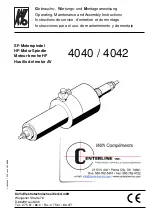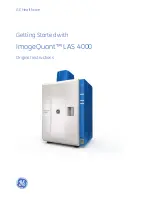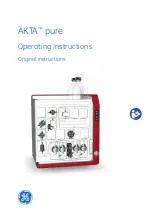
WavePro 7Zi
469
WP700Zi-OM-E-RevA
adjust the phase of the PLL (phase locked loop), which generates the sampling clock, and to adjust the
AGC (automatic gain control). Most commonly the VCO Synch is 2T.
x
Bit Cell Time:
is used as a starting estimate of the VCO Synch signal. If the value is not known and the
VCO Synch field is at the beginning of the area to be analyzed, selecting
Measure Bit Cell Time
will
determine it automatically.
x
Ignore last <n> samples:
Specifies the amount of "garbage" data to ignore after the end of the written
data and before Read Gate goes false.
Additionally, the parameters below are useful (but not essential) for Channel Emulation with reference:
x
Read Gate:
If the Read Gate signal is connected to a DDA channel and specified, it will be used to
determine the regions of the signal to be analyzed. Since the
VCO Synch
field is required for Channel
Emulation with Reference and is normally present in the head signal in every block just after Read Gate
goes true, it is recommended that Read Gate be used. If Read Gate is not present, the entire waveform will
be used unless the Analyze Region cursors are enabled.
x
Read Gate Polarity:
Typically, Read Gate is a positive true signal. However, there are drives that use a
negative true signal for Read Gate. If Read Gate is enabled, this setting allows you to select whether
"True" is high or low.
x
Read Clock:
If present, the Read Clock signal is used only to determine where the "sample time" markers
(vertical lines) are drawn.
x
Specify Region:
As previously described, markers can be used to define a subset of the head signal for
analysis.
x
Filter Head Signal:
If enabled, an equalization filter is applied to the head signal before processing and
display. This feature should be used if the DDA does not have access to the drive’s equalized head signal.
After the setup is complete, a reference waveform should be acquired and saved by selecting
Store Reference
.
Notes on Using Channel Emulation with Reference
1.
Time misalignment between the reference and the current acquisition is made up for based on end of VCO
Synch in the first Read Gate true section. If the reference contains multiple Read Gate true sections, we
assume that their relative timing is approximately the same as in the current acquisition.
2.
It is not possible to compare a reference of one sector to each sector in an acquisition containing many. It
is not possible to compare a split sector with an unsplit or differently split sector.
Using Analog Compare
This method compares a reference signal to subsequent acquisitions and looks for large changes in the
waveform. It is a general purpose test method that can be applied to finding errors in practically any signal,
including VCO Synchronization fields, data and servo-information.
The user stores a "good" reference analog waveform. On subsequent acquisitions the filter, if selected, equalizes
the newly acquired waveform. Analog Compare then attempts to measure the bit cell time and to find the end of
VCO Synch, on both the stored reference and the acquired waveforms. If that succeeds the comparison starts,
aligned by the marks at the end of VCO Synch. If the waveforms being compared do not contain VCO Synch, or if
Read Gate is not used, the message "Could not analyze VCO Synch at start of signal" is displayed. This is just a
warning, in case it is believed that VCO Synch ought to have been found. Analog Compare will proceed anyway.
Analog Compare computes the mean squared distance (msd) between the stored reference waveform and the
head signal, over a 3-byte-wide window. The two waveforms are aligned to the nearest sample at the start. As the
window is moved across the waveforms, alignment to the nearest sample is maintained as long as the timing in
the reference is within 1% of the timing of the head signal. When the normalized msd exceeds the user-set
Analog Threshold, an error will be recorded on the error list; the position of the maximum difference in the
reference and the head signal is recorded. If the difference remains above threshold for more than the length of
an encoded byte, a new error is recorded at each byte. Errors are ordered in the error list from largest to smallest
difference.
Analog Compare requires some setup, and a stored reference signal to compare to before it can be used. The
following must be provided.
Head Signal:
As with the other methods, the head signal is essential for Analog Compare. Unlike the other
methods, however, Analog Compare will work on any part of the head signal.
Reference:
The stored reference should be acquired in the same manner (same time/div, sample rate, trigger
position, etc) as the acquisitions that will be compared to it. See
Note 3
below.
Содержание DDA 7 Zi series
Страница 1: ...Operator s Manual WavePro SDA and DDA 7 Zi Series Oscilloscopes ...
Страница 2: ... L R R H HUD RU D D ...
Страница 41: ...Operator s Manual WP700Zi OM E RevA 40 The detachable WavePro Zi front panel ...
Страница 376: ...WavePro 7Zi 375 WP700Zi OM E RevA Absolute Offset Relative ...
Страница 439: ...Operator s Manual WP700Zi OM E RevA 438 ...
Страница 440: ...WavePro 7Zi 439 WP700Zi OM E RevA ...
Страница 544: ...Thank you for purchasing a WavePro SDA or DDA 7 Zi Oscilloscope ...
















































